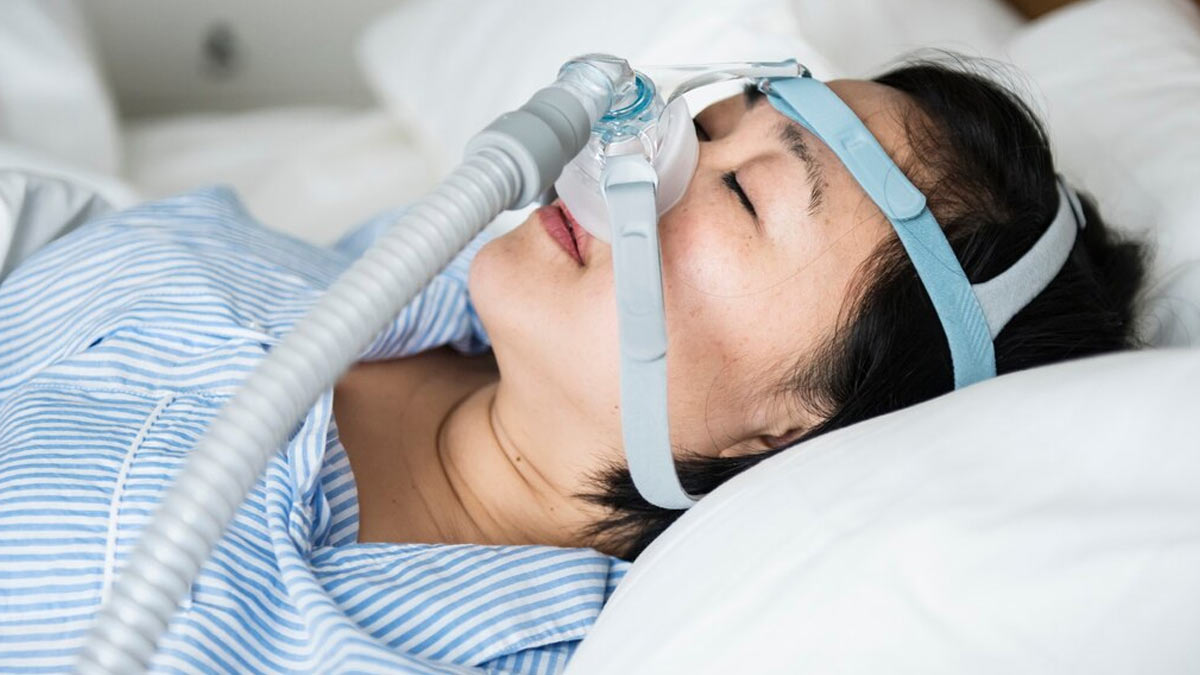
CPAP, or Continuous Positive Airway Pressure device is a therapy for those who suffer from snoring and sleeping disorders such as Obstructive Sleep Apnea (OSA). Even though the necessity of quality sleep and sleep disorders is widely accepted now, a ResMed’s Post Sleep Assessment Survey, 81% of people were not aware of CPAP therapy.
Table of Content:-
To understand more about CPAP therapy, the team of OnlyMyHealth reached out to Dr Sibasish Dey, Head, Medical Affairs, South Asia, ResMed, who informed, "It is a non-invasive treatment which is the most commonly used protocol for OSA."
Understanding CPAP

CPAP treatment is a widely used and highly effective treatment which helps a person to have a more regulated breathing. Underscoring the importance of constantly undisturbed breathing during sleep, Dr Dey said, "Snoring not only disturbs your partner or those sleeping nearby but also affects your health. Not breathing normally due to snoring for 30 seconds or more, results in the blood oxygen level dropping to 80% or less. Any level below 90% is dangerous to the body and requires your instant attention."
This is where CPAP therapy steps in as it is majorly used for treating OSA, which is characterised by a persistent blockage in the upper airway, causing disruptive breathing throughout the night. People suffering from OSA often experience fatigue, irritability, and anxiety on a regular basis, which puts a worrisome damper on their daily life and overall well-being.
Also Read: 6 Things You Need To Do Right Away To Stay Away From Sleep Apnea
The CPAP device helps manage OSA as it increases the flow of air pressure in the throat which prevents the airway from collapsing when you breathe. The device is worn during sleeping and it gently blows pressurised air through the nasal passage and helps keep it open so OSA patients can breathe normally.
How To Manage Your CPAP Device

According to ResMed’s Post Sleep Assessment Survey, out of those people who took a sleep assessment and were diagnosed with sleep disorders, only 5% started using CPAP therapy. This is alarming because OSA can increase your risk of diabetes, obesity and cardiovascular diseases if it's left untreated. That is why it is essential to be aware of CPAP devices. However, for those who do use CPAP devices on a regular, Dr Dey listed a set of best practices that you can follow to manage the device in the best possible way:
Also Read: Sleep apnea may make lung cancer more deadly, says study
- Keep your CPAP machine out of reach of pets and kids. Tubes can be easily damaged by cats or dogs. A mild soap can be used to clean them weekly. Consider changing tubes annually as they may wear out due to tiny holes that may not be visible to the naked eye.
- Filters block the dust and over a period of time become dirty and ineffective. So keep your filters clean as it also enhances the longevity of the device.
- The mask itself has various components- headgear, frame and cushion. Of these components, the cushion is the most fragile and needs careful handling. It's a good practice to clean the face before using the mask to avoid dirt and oil from damaging it. It must be cleaned every day with a mild soap mix and exposure to direct sunlight should be avoided.
- Avoid using harsh soaps and chemicals to clean any part of your CPAP device, and washed components should only be air-dried.
As per a study published in ERJ Open Research, OSA was found to be highly prevalent among the Indian population, with approximately 32.5% of people suffering from mild to severe OSA in the country. This worrying statistic highlights why CPAP devices deserve more awareness and consideration as they are the first line of defence against OSA.
Also watch this video
How we keep this article up to date:
We work with experts and keep a close eye on the latest in health and wellness. Whenever there is a new research or helpful information, we update our articles with accurate and useful advice.
Current Version